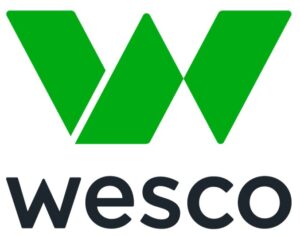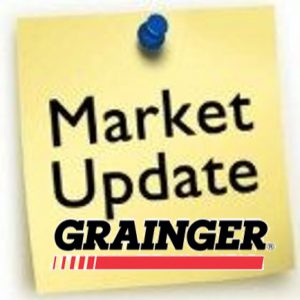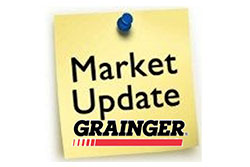Wesco and Grainger Q4 Performance, Q3 Outlook
 Recently Wesco and Grainger shared their Q4 and end of year earnings calls with the investment community. Given that these two companies, collectively, represent about 7-10% of the US electrical market with both giving insights into other secular trends, the can, collectively, be a benchmark for key segments of the electrical market … larger contractors and the industrial market.
Recently Wesco and Grainger shared their Q4 and end of year earnings calls with the investment community. Given that these two companies, collectively, represent about 7-10% of the US electrical market with both giving insights into other secular trends, the can, collectively, be a benchmark for key segments of the electrical market … larger contractors and the industrial market.
Wesco
Wesco’s 2022 sales exceeded $21 billion, a record, however, due to their diversity which includes their CSS (Communications & Security Solutions) and UBS (Utility & Broadband Solutions) markets we’ll focus on EES, the electrical sector. Remember, they also do business in Canada, and, through their global accounts group, there is some “rest of world” business that gets encompassed into their reporting.
From the transcript of the call and their presentation
- New sales record of $21.4 billion; outperformed the market
- Note: According to Wesco’s 2021 10-K, 28% of sales were from foreign subsidiaries. It could have changed but provides a benchmark. Canada was 15% of total sales. This is for total sales and may or may not be applicable by business unit. (The 2022 10-K should be available shortly and can be reviewed for updated information.)
- Their leverage is now reduced to 2.9x. (This was a goal after their acquisition of Anixter and a benchmark number to determining drive capital allocation decisions. Pre-Anixter it was a time when they would get more aggressive on the acquisition trail. Could they become more after the Rahi acquisition? If so, where (geographically) and, perhaps more importantly, what type of distributor? Do they develop their Schneider Electric network (they have some companies that are SE distributors? Do they further diversify for utility, datacom, renewables, power transmission, electronics, etc??)
- Record quarterly free cash flow (which further fuels the question of “what to do with the cash? Buy backs? Increased dividends? Invest in the company? (presumably already investing what is “feasible” for technology?))
- Announced initiating a common stock dividend (which indicates confidence in long-term projections and the cash flow to support dividends long-term)
- $1 billion stock repurchase authorization
- 2023
- Making digital advances in 2023
- Margin expansion
- More free cash flow generation
- Financial results
- For Q4
- Overall business was up 14% with 6% coming from price. This is across all businesses.
- Overall, gross margin up to 21.9% across the businesses.
- Overall, supplier rebates increased 40 basis points. (more deals? Better negotiating? Hitting one-time stretch goals?)
- Overall, EBITDA was 8.1%, up 150 basis points.
- For 2022
- Overall, sales up 18%, 8 of which came from price
- Cross sell opportunities represented 4% of sales ($850M out of $21.4 billion)
- EES
- Q4
- Up 11% organic for the quarter ($2.168 billion), 17% for the year ($8.823 billion) (note, DISC projects the market was up 10.4% last year, hence Wesco may have taken some share, although the numbers are apples and oranges as Wesco sales includes Canada and rest of world.)
- Strong non-residential construction sales; momentum in industrial and OEM end markets
- Backlog up 41% vs prior year and 4% sequentially
- EES EBITDA up to 9.1% for quarter, 9.6% for 2022
- Gross margin expansion
- Sequentially, so QoQ, Wesco saw a 3% decline, “all in”, in the EES business, hence the “rate of growth” slowed, which is consistent with what has been heard from many. Some of this is due to the market, some is due to commodity pricing (especially copper) and some is lack of continuous supplier price increases. This is the only Wesco business unit where this occurred.
- CSS
- Quarter was up 12% with stronger growth in network infrastructure driven by data centers and hyperscale projects, security solutions and A/V installations.
- UBS
- Up 22% for the quarter driven by utility sales. Up 27% for the year!
- Q4
- For Q4
2023 outlook
- Expect to grow 2-4% above “market” due to secular trends and increasing share.
- Total organic growth of 5-8% without Rahi … 6-9% with Rahi
- EES – expect mid single digit growth (which means Wesco thinks the electrical market will be low single digit growth)
- CSS and UBS are expected to be up high single digits
Feedback from Analyst questions
- January started with 14% organic growth across all of Wesco’s businesses.
- Wesco benefits from not being in the residential construction market, which they say is expecting “headwinds”.
- EES non-resi in January was “off” but has strong backlog. Industrial markets are “holding up very well and strong.” (which means commercial construction is the laggard.)
- Wesco is doing much with “unlocking” their data to support sales force and price optimization decision-making. Much is with “homegrown” applications.
Wesco Take Aways
As a conglomerate, tough to tease out insights strictly relating to the electrical and the US market from the earnings call because of the diversity of the business, especially with EES representing only 41.1% of the business but, overall …
- Industrial is strong
- Commercial construction is slowing but Wesco has a good backlog
- Using data to improve / optimize pricing
- Electrical market expectations are in line with what electrical manufacturers are saying (low single digit growth)
And while an economic slowdown, compared to the past few years, is expected, the key is being in the right secular markets and leveraging strengths.
Grainger
And some high-level input from Grainger’s earnings call:
- Investing resources into ESG and supporting customers in achieving their ESG goals (for distributors involved in the industrial and institutional markets, this could become more important. It can also represent upselling opportunities of applicable products if you know a company has ESG goals. Key is doing research and asking. We know of at least one national chain that is asking its suppliers about their ESG initiatives. Is your salesforce capable of answering the question? Manufacturers – are your reps able to answer the question? Can they promote you as focused on ESG and what your initiatives are?)
- Overall sales were $15.2 billion, up 16.5% on a daily basis or 19.3% in daily constant currency.
- For the quarter they were up 13.2% / 17.2% (so, they saw some decline in their growth rate also)
- High touch (so, traditional Grainger) business grew 7.75 points over market. Zoro achieved high teens growth. (so, eCommerce kept pace)
- Grainger core business up 17% for the quarter
- Up 20% in natural resources, transportation and heavy manufacturing.
- Grainger estimates that overall MRO market (all segments of the market) grew 9-10% in the quarter.
- Zoro was up 19.5% for the quarter
- Customer acquisition and retention
- Zoro now has 11 million SKUs, adding 2 million in 2022
- Zoro business now is over $1 billion, or 6.6+% of the business
- eCommerce, overall, is higher as eCommerce also includes MonotaRO (Japanese business.)
- 2023
- Seeking growth of 7-11%
- Grainger – 5-9.5%
- Expects MRO market to be up 1-5% with price representing 4-5% of this (so, negative to flat organic business.)
- Endless Assortment
- 16-18% growth (each business, Zoro and MonotaRO, similarly), so eCommerce to grow at a faster rate.
- Feedback from analyst questions
- Expects second half of the year to be more challenging
- Share gains for High-Touch business coming from existing customers … account penetration. Zoro business seeing a mix between new customers and repeat buyers (and hence remarketing efforts are working.
- Grainger – 5-9.5%
- Seeking growth of 7-11%
- Grainger core business up 17% for the quarter
Grainger takeaways
- Industrial markets are strong
- MRO is strong
- Accelerated growth through eCommerce but driven by more SKUs, more usage, account acquisition … which will all relate back to marketing effort
Overall takeaways
- Size matters for synergies and investing back into the business
- Using data to inform sales and pricing.
- Price realization is driven by some data but, more importantly, by value proposition
- Marketing matters
- Industrial market remains strong and outlook is more favorable
- eCommerce requires quantity (SKUs) and quality of marketing





















